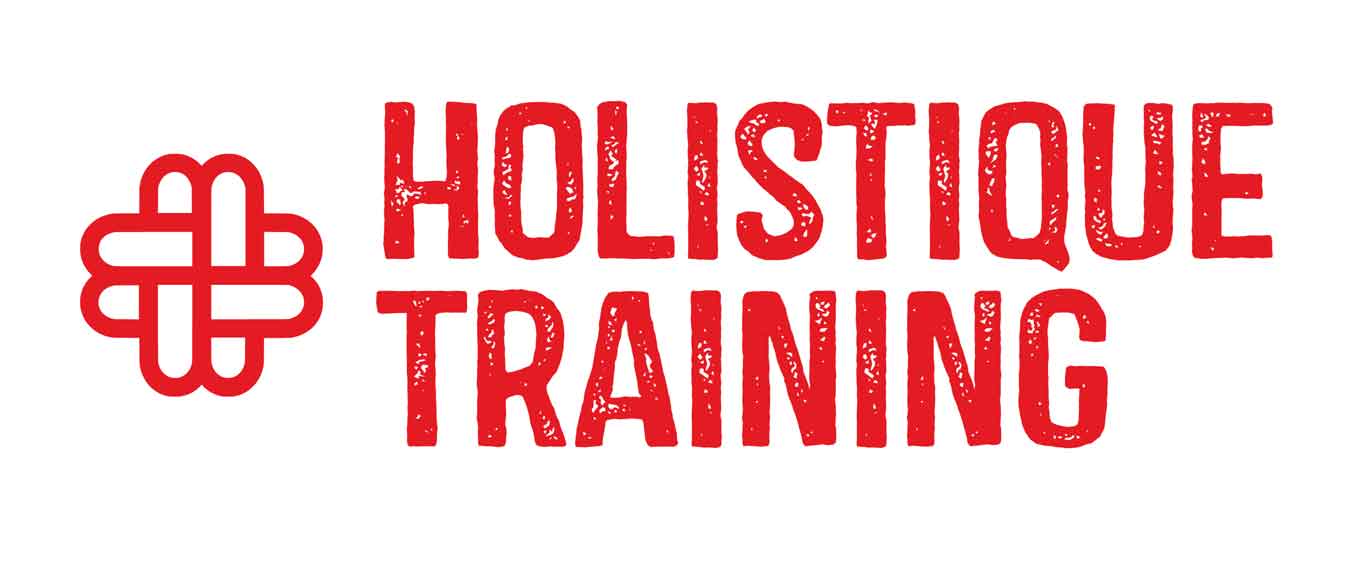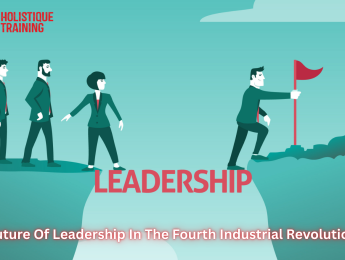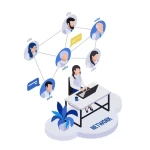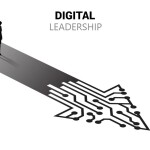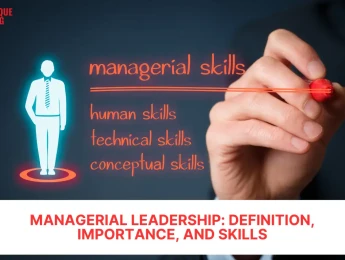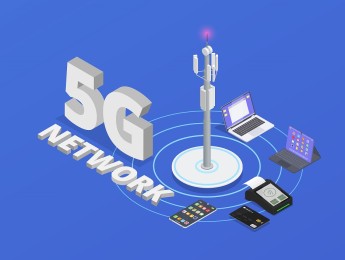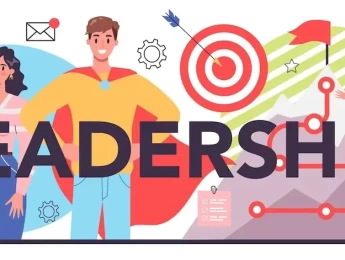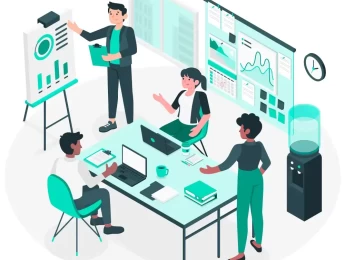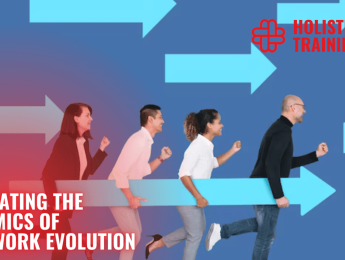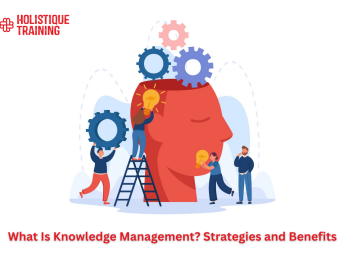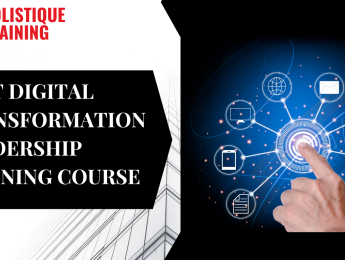- Table of Contents
- Introduction
- What is the Fourth Industrial Revolution?
- How Leadership Expectations Are Changing
- The Role of Emotional Intelligence in the Age of AI
- Why is EI more important than ever?
- Leading Hybrid and Remote Teams
- Agile Leadership: A Must-Have Trait
- Ethical Leadership in a Tech-Driven World
- Data Privacy and Digital Rights
- Algorithmic Bias and Fairness
- Accountability and Decision-Making
- Digital Well-Being
- Sustainability and Environmental Ethics
- Upskilling and Lifelong Learning: A Leadership Imperative
- Leveraging Data for Strategic Decision-Making
- 1. Identifying Key Metrics
- 2. Using Predictive Analytics
- 3. Democratizing Data Access
- 4. Maintaining Data Ethics
- Inclusivity and Diversity as Leadership Priorities
- The Evolution of Leadership Development Programs
- Conclusion
Introduction
The landscape of leadership is evolving faster than ever before. As we transition into an era marked by rapid technological innovation, globalization, and unprecedented connectivity, traditional leadership approaches are no longer sufficient. Leaders today face the challenge of navigating complexity, uncertainty, and digital disruption on a global scale. This shift is driven by the Fourth Industrial Revolution—a concept introduced by Klaus Schwab, Founder and Executive Chairman of the World Economic Forum—which builds on the digital revolution and integrates technologies such as artificial intelligence, robotics, the Internet of Things (IoT), quantum computing, and biotechnology.
Unlike previous industrial revolutions, the Fourth Industrial Revolution is characterized not only by its speed but also by the scope and impact it has across industries and societies. As machines become more intelligent and automation reshapes the nature of work, the demands placed on leaders are changing. Today’s leaders must balance innovation with ethical responsibility, remote management with human connection, and rapid adaptation with long-term vision.
In this article, we will discuss how leadership is being redefined by the Fourth Industrial Revolution. We will explore the new competencies required, the rising importance of emotional intelligence, the shift toward agile and ethical leadership, and the emphasis on inclusivity, data-driven decision-making, and continuous learning. This comprehensive overview aims to prepare current and future leaders to thrive in an age where technology and humanity must evolve together.
What is the Fourth Industrial Revolution?
The Fourth Industrial Revolution (4IR) represents a fundamental change in the way we live, work, and relate to each other. Building on the previous three revolutions—mechanical (1IR), electrical (2IR), and digital (3IR)—the Fourth Industrial Revolution integrates physical, digital, and biological systems. Technologies like AI, blockchain, nanotechnology, and 5G are blurring the lines between the physical and virtual worlds.
This revolution differs in three major ways:
- Velocity: It’s happening at an exponential pace, outstripping previous industrial changes
- Scope: It affects every industry and reshapes entire systems of production, management, and governance.
- Systems Impact: It transforms not just industries but entire societies, economies, and geopolitical landscapes.
In the context of leadership, the 4IR demands new ways of thinking and working. Leaders must understand and adopt emerging technologies while also addressing their ethical and societal implications. Traditional hierarchical models are giving way to collaborative, networked forms of leadership.
Table: Comparing the Four Industrial Revolutions
Revolution | Key Technologies | Focus | Leadership Style Then vs Now |
1st | Steam engine, mechanization | Manufacturing | Command and control |
2nd | Electricity, assembly line | Mass production | Hierarchical and efficiency-focused |
3rd | Computers, internet | Automation & digitization | Strategic and digital transition |
4th | AI, IoT, robotics, biotech | Integration of digital & physical | Agile, ethical, tech-savvy, people-centered |
How Leadership Expectations Are Changing
In the Fourth Industrial Revolution, leadership expectations are undergoing a radical transformation. The workforce now values transparency, flexibility, innovation, and ethical responsibility.
Employees increasingly expect their leaders to:
- Foster psychological safety and open communication.
- Support work-life balance and hybrid models.
- Be authentic and socially conscious.
- Embrace digital tools and data-driven decision-making.
Traditional command-and-control leadership models are losing relevance. In their place, we see the rise of transformational, participative, and servant leadership styles. Leaders are now seen as facilitators and enablers rather than top-down decision-makers.
A Gallup survey (2022) found that organizations with engaged and inclusive leadership saw 21% higher profitability and 17% higher productivity. This reflects the shift in leadership from authority to influence, and from compliance to inspiration.
To remain effective, modern leaders must continuously evolve. They need digital literacy, emotional intelligence, cross-cultural sensitivity, and a genuine commitment to lifelong learning. They are expected to be not just problem-solvers but visionaries who can lead with purpose and empathy in uncertain, fast-paced environments.
The Role of Emotional Intelligence in the Age of AI
Emotional Intelligence (EI) refers to the ability to recognize, understand, manage, and influence one's own emotions and the emotions of others. It includes key components such as self-awareness, self-regulation, motivation, empathy, and social skills. These soft skills were once seen as secondary in leadership—but in the era of automation and artificial intelligence, they have become indispensable.
As machines take over more analytical and repetitive tasks, human-centric leadership is emerging as a crucial differentiator. Leaders must now focus on building trust, resolving conflicts, and fostering collaboration across diverse and often virtual teams. Emotional intelligence provides the foundation for these capabilities.
Why is EI more important than ever?
- Humanizing Technology: In an AI-driven world, employees seek leaders who can bring compassion and human connection to the workplace. Emotional intelligence allows leaders to bridge the emotional gap created by automation.
- Managing Change and Uncertainty: The Fourth Industrial Revolution brings constant disruption. Leaders with high EI are better equipped to manage stress, navigate uncertainty, and help their teams remain resilient.
- Inclusive Leadership: Emotional intelligence fosters empathy, which is essential for creating inclusive work environments where all voices are heard and valued.
- Enhanced Communication: In hybrid and global teams, non-verbal cues are often missing. Leaders with strong EI can interpret tone, context, and underlying emotions more effectively.
A study published in the Journal of Organizational Behavior (2021) found that emotionally intelligent leaders enhance employee engagement, reduce burnout, and increase organizational loyalty.
In short, emotional intelligence is not a "nice-to-have" quality—it is a core leadership requirement in the Fourth Industrial Revolution.
Leading Hybrid and Remote Teams
The rise of remote and hybrid work environments has fundamentally changed how leaders engage with their teams. Distributed workforces offer flexibility and global talent access, but they also introduce unique challenges—chief among them: maintaining a unified culture, ensuring effective communication, and building trust without physical presence.
Leaders in this new landscape must become facilitators of connectivity, not just in terms of technology, but also in terms of relationships. This requires a new set of leadership practices:
- Clear and Consistent Communication: Without hallway conversations and impromptu check-ins, remote teams need structure. Leaders must implement regular updates, virtual check-ins, and open-door digital policies.
- Digital Fluency: Leaders must be comfortable using collaboration tools (like Slack, Zoom, Notion, or Teams) and encouraging their teams to adopt efficient virtual workflows.
- Cultivating Trust: Trust becomes more important when leaders can’t physically observe their teams. This involves giving employees autonomy while remaining available for guidance.
- Inclusive Engagement: Remote work can isolate employees. Leaders must create rituals that maintain engagement, such as virtual coffee chats, recognition moments, and inclusive meetings.
A 2021 study by McKinsey revealed that companies with strong hybrid leadership practices were 2.1 times more likely to outperform their peers in productivity and employee satisfaction.
By adapting leadership styles to suit virtual environments, future leaders can build resilient, connected, and high-performing teams across borders.
Agile Leadership: A Must-Have Trait
Agile leadership is a modern leadership approach that prioritizes adaptability, continuous learning, and quick decision-making. In the context of the Fourth Industrial Revolution, where disruption is constant and customer demands shift rapidly, agility is no longer optional—it’s essential.
Agile leaders don’t just react to change; they anticipate it. They embrace iterative planning, cross-functional collaboration, and frequent feedback. Rather than focusing solely on control and predictability, they promote experimentation and resilience.
Key traits of agile leaders include:
- Customer-Centric Thinking: Understanding and responding to customer needs with speed.
- Empowered Teams: Delegating authority and supporting autonomy.
- Growth Mindset: Learning from failures and adapting strategies.
- Transparency and Speed: Making decisions quickly based on real-time data.
According to the Project Management Institute’s Pulse of the Profession report (2023), 71% of organizations with highly agile leaders met their business goals, compared to only 45% of less agile organizations.
In fast-evolving industries, agile leadership provides a strategic edge by enabling rapid pivots, innovation under pressure, and the cultivation of nimble, motivated teams.
Ethical Leadership in a Tech-Driven World
As technological advancements accelerate, ethical considerations are becoming central to leadership. Leaders are now tasked with not only driving innovation but also ensuring that it aligns with values such as fairness, transparency, and accountability.
Data Privacy and Digital Rights
With the widespread use of data analytics and AI, protecting user privacy is a critical concern. Ethical leaders must champion data transparency and ensure that personal information is collected, stored, and used responsibly. This includes adhering to GDPR and other data regulations, while also proactively communicating data practices to stakeholders.
Algorithmic Bias and Fairness
AI and machine learning systems can unintentionally perpetuate biases if trained on flawed or limited datasets. Ethical leadership demands a proactive approach to auditing algorithms, diversifying data sources, and involving cross-disciplinary teams in tech development to ensure fairness and inclusivity.
Accountability and Decision-Making
In a world where machines make recommendations or decisions, leaders must remain accountable for outcomes. They must understand how algorithms work and take responsibility for their implementation and impact.
Digital Well-Being
Constant connectivity can lead to digital burnout. Ethical leaders promote healthy boundaries around technology use and advocate for policies that protect employee mental health in digitally demanding environments.
Sustainability and Environmental Ethics
Leaders must also consider the environmental footprint of their digital initiatives. From managing e-waste to selecting energy-efficient data centers, sustainable tech practices are increasingly seen as a leadership responsibility.
In the Fourth Industrial Revolution, ethical leadership is not a side issue—it’s at the core of innovation and corporate credibility.
Upskilling and Lifelong Learning: A Leadership Imperative
To stay relevant in a world of fast-paced change, leaders must model a culture of continuous learning. The Fourth Industrial Revolution rewards those who are curious, adaptable, and future-oriented.
Upskilling involves acquiring new competencies that are essential for navigating emerging technologies and complex challenges. Leaders who prioritize their own development inspire their teams to do the same.
Why lifelong learning matters:
- Technology evolves rapidly: Leaders must understand trends like AI, blockchain, and automation to make informed decisions.
- Workforce expectations shift: Employees prefer working with leaders who invest in their own growth and promote organizational learning.
- Leadership roles are evolving: New challenges require new skills in digital literacy, change management, and cross-cultural communication.
According to a World Economic Forum report (2023), 50% of all employees will need reskilling by 2025, and leadership is no exception. Organizations that embed learning into their culture are more likely to innovate, retain talent, and stay competitive.
Modern leadership requires becoming a lifelong learner, not only to keep pace with change but to lead it.
Leveraging Data for Strategic Decision-Making
Data-driven leadership involves a strategic, intentional use of data to guide decisions, shape strategies, and empower teams across the organization. This leadership style is not just about collecting data, but about interpreting it meaningfully, acting on it ethically, and fostering a culture where data is accessible, actionable, and aligned with organizational goals. Here's how it works in practice:

1. Identifying Key Metrics
Effective leaders begin by selecting the right performance indicators that reflect the organization’s strategic objectives. Rather than tracking vanity metrics or overwhelming teams with excessive data, they focus on KPIs (Key Performance Indicators) that truly matter—such as customer retention rate, employee engagement, operational efficiency, and ROI on innovation. These metrics become the foundation for setting goals, measuring progress, and course-correcting when necessary.
2. Using Predictive Analytics
Modern leadership extends beyond analyzing historical data—it anticipates the future. Through predictive analytics and machine learning tools, leaders can forecast trends in market demand, customer behavior, risk exposure, and talent needs. This forward-looking approach enables proactive decision-making, allowing organizations to seize opportunities early or avoid potential disruptions. For example, retail leaders may use predictive models to optimize inventory based on seasonal buying patterns or economic signals.
3. Democratizing Data Access
In a data-driven culture, information is not hoarded at the top—it flows across teams. Leaders ensure that data is accessible in real time, across departments, through user-friendly dashboards or collaborative platforms. By empowering teams with the insights they need, organizations promote faster decision-making, increased accountability, and a more agile response to challenges. It also enhances transparency, which fosters trust and cross-functional alignment.
4. Maintaining Data Ethics
With great data power comes great responsibility. Ethical leadership in a data-rich environment means upholding strict standards of privacy, security, and transparency. Leaders must ensure compliance with regulations such as GDPR, and clearly communicate how data is collected, stored, and used. Ethical data practices also include preventing algorithmic bias, securing customer consent, and being transparent about AI-driven decisions. This builds long-term stakeholder trust and protects the brand’s integrity.
In an era of information abundance, leaders must move beyond gut instinct. Strategic advantage lies in leveraging data to forecast trends, assess risks, and customize services—all while maintaining ethical responsibility.
Inclusivity and Diversity as Leadership Priorities
Diverse and inclusive teams perform better, innovate more, and build stronger customer relationships. Leaders in the Fourth Industrial Revolution must embed diversity and inclusion (D&I) into their leadership philosophy.
Inclusion goes beyond hiring practices. It means:
- Creating safe environments where all voices are heard.
- Addressing systemic barriers to equity.
- Supporting diverse leadership pipelines and mentorship programs.
According to McKinsey’s 2023 report, companies in the top quartile for ethnic and gender diversity on executive teams were 36% more likely to outperform peers in profitability.
Table: Key Benefits of Inclusive Leadership
Benefit | Impact |
Greater Innovation | Diverse teams generate more ideas |
Better Decision-Making | Inclusive teams avoid groupthink |
Talent Retention | Employees feel valued and included |
Customer Connection | Teams reflect the diversity of customers |
Inclusive leadership is not a trend—it’s a requirement for resilient and future-ready organizations.
The Evolution of Leadership Development Programs
As the demands on leaders shift, leadership development programs must also evolve. Traditional models that focus on authority, compliance, and linear career paths are no longer sufficient.
Modern programs focus on:
- Digital fluency and tech literacy.
- Strategic thinking and systems awareness.
- Cross-functional collaboration and agile methods.
- Ethical and inclusive decision-making.
Experiential learning, coaching, peer feedback, and simulations are increasingly being used to prepare leaders for real-world complexity. Programs must also be personalized to fit different leadership styles, learning paces, and cultural contexts.
According to a 2023 report by LinkedIn Learning, companies that invest in future-focused leadership development see 42% faster revenue growth and 37% higher employee retention.
Leadership development is no longer a luxury—it is a strategic necessity for navigating the Fourth Industrial Revolution.
Conclusion
The Fourth Industrial Revolution presents both immense opportunities and daunting challenges for leaders. As technologies evolve and reshape the business and social landscape, leadership must evolve in tandem—becoming more human-centered, adaptable, ethical, and inclusive.
The leaders of tomorrow will be those who can:
- Understand and implement new technologies while balancing human values.
- Cultivate emotional intelligence and lead remote, hybrid, and global teams.
- Embrace agility, promote continuous learning, and drive ethical innovation.
- Champion diversity, empower data-driven decisions, and adapt leadership development practices to emerging needs.
In this ever-changing environment, leadership is no longer defined by titles or power—it is defined by the ability to learn, adapt, and inspire.
For professionals who want to take actionable steps toward becoming future-ready leaders, we strongly recommend enrolling in our Leadership, Innovation & Communication course.
This course, offered by Holistique Training, equips participants with:
- The tools to lead in complex, digital-first environments.
- Strategies to foster innovation and resilient communication.
- Practical insights into influencing, decision-making, and team engagement.
- Frameworks for ethical, inclusive, and visionary leadership.
Whether you're a new manager, seasoned executive, or team lead seeking reinvention, this course provides the skills and mindset needed to lead with purpose in the Fourth Industrial Revolution. Join us today to future-proof your leadership.
